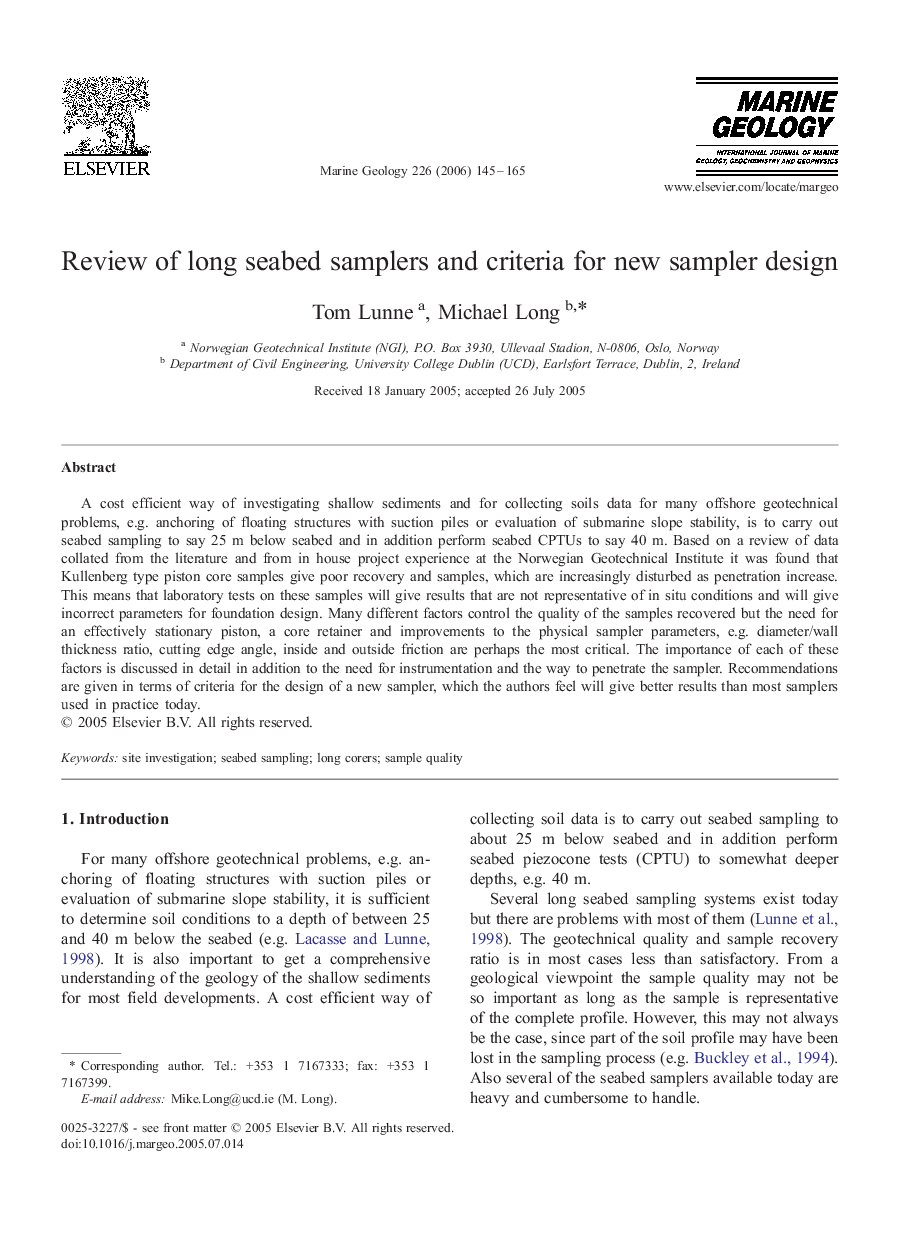| Article ID | Journal | Published Year | Pages | File Type |
|---|---|---|---|---|
| 4719756 | Marine Geology | 2006 | 21 Pages |
A cost efficient way of investigating shallow sediments and for collecting soils data for many offshore geotechnical problems, e.g. anchoring of floating structures with suction piles or evaluation of submarine slope stability, is to carry out seabed sampling to say 25 m below seabed and in addition perform seabed CPTUs to say 40 m. Based on a review of data collated from the literature and from in house project experience at the Norwegian Geotechnical Institute it was found that Kullenberg type piston core samples give poor recovery and samples, which are increasingly disturbed as penetration increase. This means that laboratory tests on these samples will give results that are not representative of in situ conditions and will give incorrect parameters for foundation design. Many different factors control the quality of the samples recovered but the need for an effectively stationary piston, a core retainer and improvements to the physical sampler parameters, e.g. diameter/wall thickness ratio, cutting edge angle, inside and outside friction are perhaps the most critical. The importance of each of these factors is discussed in detail in addition to the need for instrumentation and the way to penetrate the sampler. Recommendations are given in terms of criteria for the design of a new sampler, which the authors feel will give better results than most samplers used in practice today.
